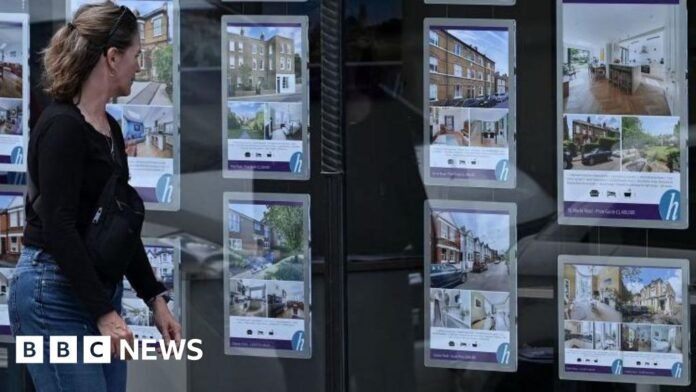The average rate on a five-year fixed mortgage has dropped below 5% for the first time since May 2023, as the cost of borrowing continues to fall steadily.
The average five-year fixed rate hit 4.99% on Thursday, from 5% a day earlier, according to financial information service Moneyfacts.
Although the percentage drop may only equate to a small financial saving, it may signal a shift in market sentiment, with Moneyfacts describing such moments as a “symbolic turning point”.
Even the smallest rate drop can boost buyer confidence and spur greater competition among lenders.
Meanwhile, the average two-year fixed rate mortgage, which fell below 5% last week for the first time since former Prime Minister Liz Truss’s mini-budget in September 2022, dropped further on Thursday.
It fell to 4.97% from 4.98% the previous day.
Adam French, head of news at Moneyfacts, said the latest data was “more welcome news for borrowers” and said it showed lenders were “competing more aggressively”.
Commenting on the five-year mortgage rate drop, Mr French said: “The slow and steady fall in the cost of borrowing over the last year combined with strong average earnings growth has helped to marginally boost affordability for many homeowners and homebuyers.”
However, he thinks the latest inflation reading of 3.8% has effectively stopped the chance of seeing another base rate cut in 2025.
“As a result, a few modest mortgage rate reductions are the best borrowers can probably hope for in the short term as lenders adjust to prospect of higher rates for longer,” Mr French added.
Lenders are also offering more choice, with 7,031 residential mortgage products available, which is up from 6,992 on the previous working day.
Hundreds of thousands of borrowers are due to re-mortgage this year.
UK Finance, the banking industry group, said 900,000 fixed rate deals are due to expire in the second half of 2025.
Mortgage rates are still higher than in the years before the mini-budget.
The fiscal event pushed up the cost of UK government borrowing, which fed through into mortgage rates. By July 2023, the borrowing cost of mortgages had soared to the highest level since the 2008 financial crisis.





